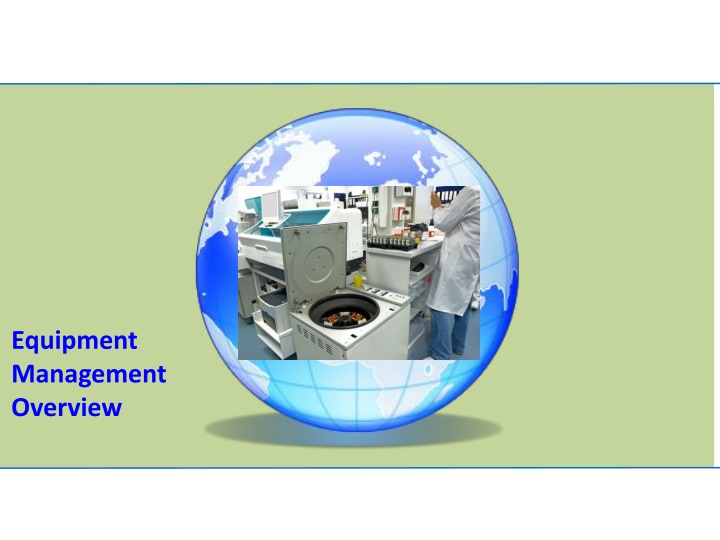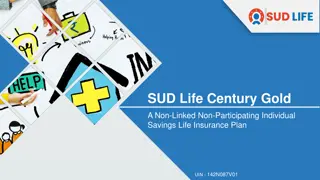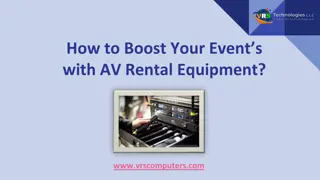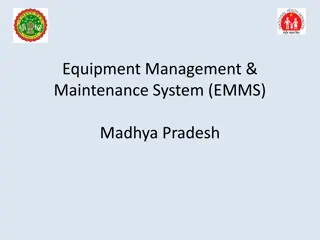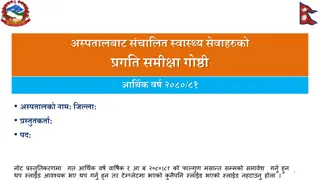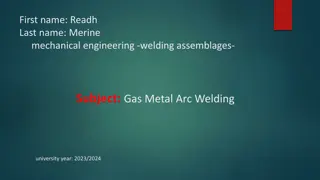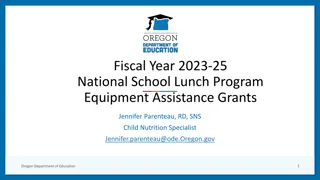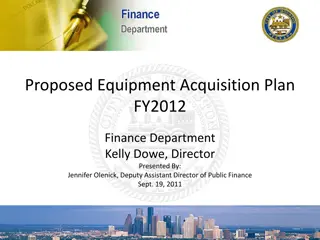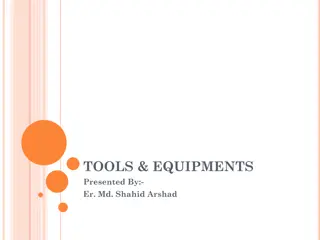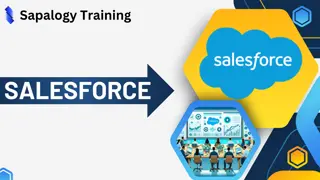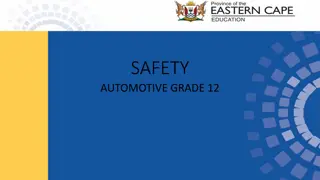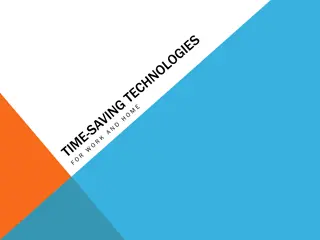Equipment Management Overview
Explore various facets of equipment management including preventive maintenance, troubleshooting, training, calibration, procurement, and documentation. Learn about equipment qualification, pre-installation requirements, and the importance of selection criteria. Discover the significance of support and backup services in the procurement process. Equip yourself with the knowledge to ensure consistent quality and optimal performance of equipment in your organization.
Download Presentation

Please find below an Image/Link to download the presentation.
The content on the website is provided AS IS for your information and personal use only. It may not be sold, licensed, or shared on other websites without obtaining consent from the author.If you encounter any issues during the download, it is possible that the publisher has removed the file from their server.
You are allowed to download the files provided on this website for personal or commercial use, subject to the condition that they are used lawfully. All files are the property of their respective owners.
The content on the website is provided AS IS for your information and personal use only. It may not be sold, licensed, or shared on other websites without obtaining consent from the author.
E N D
Presentation Transcript
Equipment Management Overview
EQUIPMENT MANAGEMENT Preventive Maintenan ce Troubleshoo ting Training and Skill Develop ment Calibratio n Service, Repair, Safety OQ and PQ Retireme nt & Condem ning Installatio n Selection, Procureme nt and Acquisitio n Equipment Manageme nt Document ation
Selection, Procurement and Acquisition Selection Criteria Performance Characteristics Accommodation and Environment requirements Maintenance & service Sample load & Throughput Bench top/Floor model Closed system/ Open system Cost - includes Running costs, Reagents, Spares Power consumption User Specific requirements (USRs)
Selection, Procurement and Acquisition What level & quality of support/ backup is available for; Training Technical advice Rapid call out Reliable supply of reagents & spares
EQUIPMENT MANAGEMENT Preventive Maintenan ce Troubleshoo ting Training and Skill Develop ment Calibratio n Service, Repair, Safety OQ and PQ Retireme nt & Condem ning Installatio n Selection, Procureme nt and Acquisitio n Equipment Manageme nt Document ation
Equipment Qualification: Acceptance Equipment Qualification Pre- Installation Qualification (IQ) Operational Qualification (OQ) Performance Qualification (PQ) Maintenance Qualification (MQ) installation verification Equipment Qualification through IQ, OQ, PQ and MQpractices is a part of GMP and GLP through which Manufacturers and laboratories can assure that their equipment delivers consistent quality
Pre-installation Specifications for physical environment Temperature tolerances Humidity Dust Vibration Load bearing Light, direct sun Space & ventilation Voltage and power backup (UPS?) Water pressure & purity Drainage
Installation Qualification(IQ) Responsibility: Manufacturer Never open the equipment before the vendor arrives Procedures for unpacking the instrument Detailed component list, hardware, software, accessories Spare parts inventory Electrical circuits Instructions on what to do if the instrument is damaged - insurance? Specifications of service requirements Documents: Signatures
EQUIPMENT MANAGEMENT Preventive Maintenan ce Troubleshoo ting Training and Skill Develop ment Calibratio n Service, Repair, Safety OQ and PQ Retireme nt & Condem ning Installatio n Selection, Procureme nt and Acquisitio n Equipment Manageme nt Document ation
Equipment Qualification: Acceptance Equipment Qualification Pre- Installation Qualification (IQ) Operational Qualification (OQ) Performance Qualification (PQ) Maintenance Qualification (MQ) installation verification Equipment Qualification through IQ, OQ, PQ and MQpractices is a part of GMP and GLP through which Manufacturers and laboratories can assure that their equipment delivers consistent quality
Operational Qualification (OQ) Responsibility: Manufacturer Test configurations Calibrations Function Checks Documents Training of Personnel
Performance Qualification (PQ) Laboratory s Responsibility Verifying the Manufacturer s Claims of Performance Characteristics Precision Accuracy Linearity Biological Reference Ranges Never start patient reporting before PQ is complete
EQUIPMENT MANAGEMENT Preventive Maintenan ce Troubleshoo ting Training and Skill Develop ment Calibratio n Service, Repair, Safety OQ and PQ Retireme nt & Condem ning Installatio n Selection, Procureme nt and Acquisitio n Equipment Manageme nt Document ation
Training Start-up & shut-down procedures Cleaning & maintenance Sample preparation & handling QC & calibration procedures Trouble shooting Data acquisition and storage
EQUIPMENT MANAGEMENT Preventive Maintenan ce Troubleshoo ting Training and Skill Develop ment Calibratio n Service, Repair, Safety OQ and PQ Retireme nt & Condem ning Installatio n Selection, Procureme nt and Acquisitio n Equipment Manageme nt Document ation
Equipment Qualification: Acceptance Equipment Qualification Pre- Installation Qualification (IQ) Operational Qualification (OQ) Performance Qualification (PQ) Maintenance Qualification (MQ) installation verification Equipment Qualification through IQ, OQ, PQ and MQpractices is a part of GMP and GLP through which Manufacturers and laboratories can assure that their equipment delivers consistent quality
Functioning Equipment is Vital to Quality Service Produces reliable test results Lowers repair costs Functioning Equipment Quality Results Prevents delays in testing Maintains productivity
C O S T
Maintenance Plans Train staff in all authorized maintenance steps Maintenance plan for every equipment Daily Weekly Monthly As needed Documentation of the maintenance Verification by technical supervisory teams
EQUIPMENT MANAGEMENT Preventive Maintenan ce Troubleshoo ting Training and Skill Develop ment Calibratio n Service, Repair, Safety OQ and PQ Retireme nt & Condem ning Installatio n Selection, Procureme nt and Acquisitio n Equipment Manageme nt Document ation
Process Map helps in Error Detection Breaking down all phases of the test system into steps, so that weak points can be identified Each step can be analyzed to find potential failure modes that could present significant risk to patients Process can then be further analyzed to see if controls can be put into place to avoid the failures
Troubleshooting Plan Train staff in troubleshooting Troubleshooting plan for every equipment Guidance from Operators Manual: Understand all flags WHO manual Ground level experience Bench aids at workstations
EQUIPMENT MANAGEMENT Preventive Maintenan ce Troubleshoo ting Training and Skill Develop ment Calibratio n Service, Repair, Safety OQ and PQ Retireme nt & Condem ning Installatio n Selection, Procureme nt and Acquisitio n Equipment Manageme nt Document ation
Calibration What? Which equipment? Why? When? By whom? How? How is it verified?
What is Calibration? The process of: To provide a known comparison between a Reference Value and a Measured Value
Why Calibrate ? Wear and tear Temperature Humidity Mechanical Stress (Pipettes, Centrifuges, tubing) Dust Loss of alignment Volume discrepancies Pressure discrepancies Major Maintenance
When to calibrate? As per the manufacturers' recommendations As per accreditation body requirements (e.g. SLAB) After major maintenance processes Frequency will also depend on usage rate and conditions of use
Who calibrates? The Manufacturer (Analytical Equipment) Through an authorized agency, SLAB accredited (ISO 17025 accredited) for Ancillary Equipment Demonstrate Traceability
How are calibrations done? A reference is used which is traceable to the SI unit. The unit under calibration is assessed with reference to the reference Any discrepancies are noted and compared against acceptance criteria If acceptable, calibration has passed If not, the equipment has to be repaired and recalibrated
ELSIA Reader Calibration Each calibration plate comes with a set of predefined reference values for each wavelength with appropriate traceability.
ELSIA Reader Calibration The plate is then checked on the reader to be calibrated and the recovered values are checked against the reference values. Any discrepancy will be assessed, accepted or rejected. Troubleshooting done and corrected by the technical support team.
ELISA Reader Calibration Certificate It is essential to get a certificate of calibration, as shown in the picture. This also will show the next due calibration
EQUIPMENT MANAGEMENT Preventive Maintenan ce Troubleshoo ting Training and Skill Develop ment Calibratio n Service, Repair, Safety OQ and PQ Retireme nt & Condem ning Installatio n Selection, Procureme nt and Acquisitio n Equipment Manageme nt Document ation
Service, Repair Service: Scheduled Maintenance Availability of AMC and CMC will enable a smooth process Always file service reports Repair Breakdown, when in-house efforts fail Availability of AMC and CMC will enable a smooth process Always file the breakdown and downtime reports
Breakdown Look for options to continue service Obtain back-up instrument from central stores or manufacturer Refer sample to nearby laboratory Reporting breakdown, reducing downtime Call log Avail remote support Training technicians on authorized steps Monitor downtime From the time of breakdown to the uptime Set limits Set downtime as a Quality Indicator
Equipment Safety Electrical Safety Proper voltage regulators UPS and surge protection Periodic checks for their wiring, earthing, fuses and switches regularly. Avoid using with wet surfaces or floors. Any obvious damage or defects must be reported to supervisor and maintenance department for proper action. It is strictly forbidden to use equipment when in doubt. Equipment are clearly labeled if found to be defective.
Equipment Safety Physical Safety Interlock systems. Examples of interlock systems includes the system that prevents the operation of Biological Safety Cabinet s light when the UV lamp is turned on UV safety Special work practices Equipment hazard labeling Use of PPE and training are required to avoid the hazards. Never work in a BSC while the germicidal lamp is on.
Equipment Safety Bio-Safety Aerosols Breakages Spillages Decontamination schedule for all equipment
EQUIPMENT MANAGEMENT Preventive Maintenan ce Troubleshoo ting Training and Skill Develop ment Calibratio n Service, Repair, Safety OQ and PQ Retireme nt & Condem ning Installatio n Selection, Procureme nt and Acquisitio n Equipment Manageme nt Document ation
Decommissioning & Retiring Retirement and decommissioning process is the last stage in application or product life cycle of the equipment Retirement and decommissioning of unused / non-working equipment is critical to keep laboratories clutter free and safe
Decommissioning & Retiring When to Retire Equipment? When experts certify Non-repairable: Unserviceable/Unreliable/ Unfit for Use : Obsolete model, to be replaced with new model:parts are out of date or the clinical technique is no longer recommended Damaged through negligence or abuse Why to Retire Equipment? Prevent inaccurate test results Free up valuable space
Decommissioning & Retiring How to Retire Equipment? Label appropriately Not in USE and keep safely Salvage any usable parts Consider biohazard, follow safety disposable procedures National and institutional guidelines Returning to manufacturer
EQUIPMENT MANAGEMENT Preventive Maintenan ce Troubleshoo ting Training and Skill Develop ment Calibratio n Service, Repair, Safety OQ and PQ Retireme nt & Condem ning Installatio n Selection, Procureme nt and Acquisitio n Equipment Manageme nt Document ation
Equipment Documentation SOPs for the equipment operation Each major equipment will have its own specific equipment maintenance documents and records Smaller equipment such as centrifuges and pipettes with common maintenance documents and records Specific processes like troubleshooting, flags, key operation guidelines should be displayed as bench aids Calibration Matrix: maintenance and calibration dates and the next due be made.
Maintenance documents Step-by-step instructions for preventive maintenance, including frequency of performance and how to keep records of performance. Directions for calibrating the instrument. Guide for troubleshooting. Any required manufacturer s service and repair. List of any specific items needed for use and maintenance, such as spare parts. Bench-aids of flags. MSDS sheets required.
Maintenance records Dedicated logbooks Preventive maintenance activities and schedule. Recording of function checks and calibration. Any maintenance performed by the manufacturer. Full information of problem Troubleshooting activity Information regarding resolution of the problem Downtime
